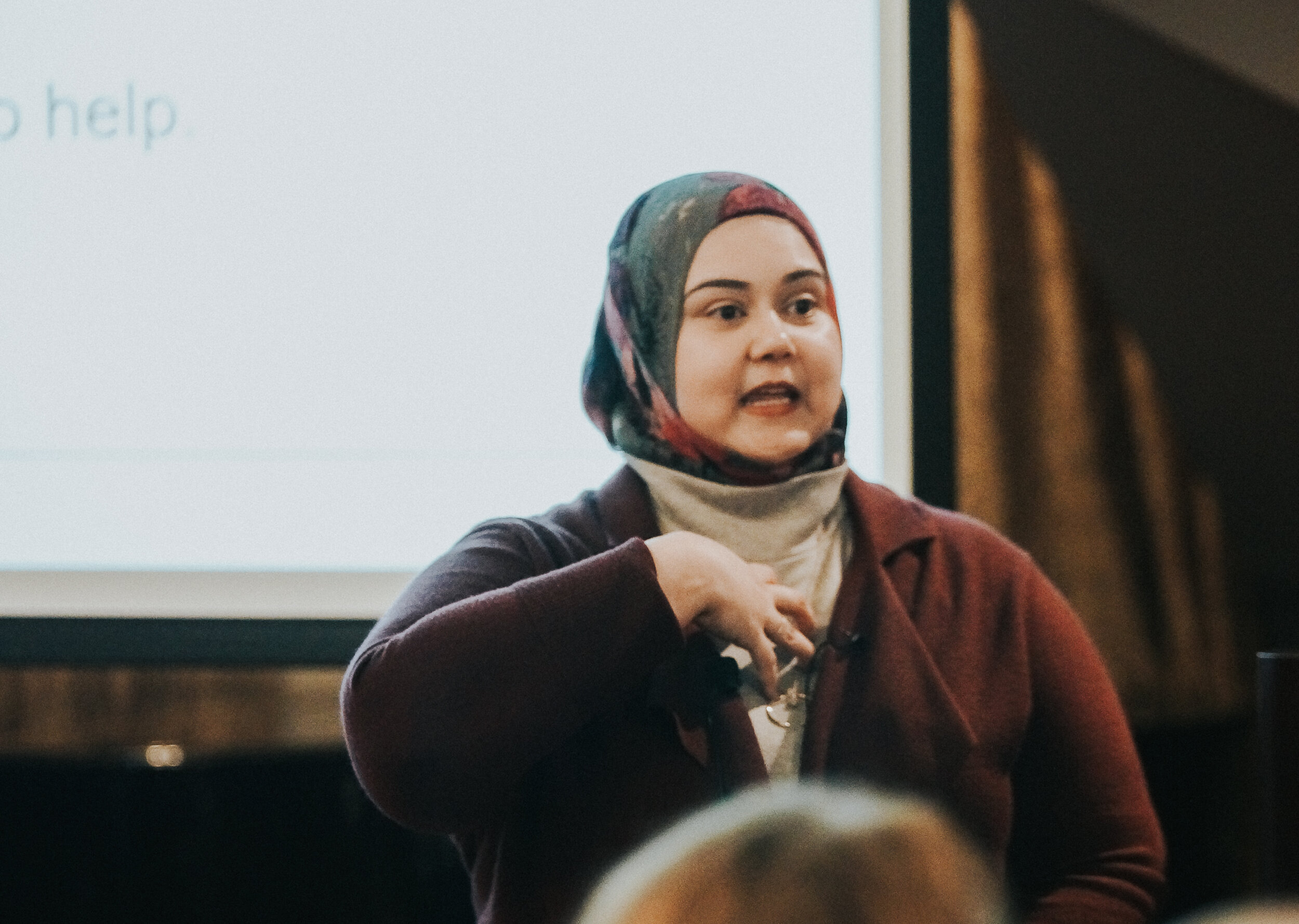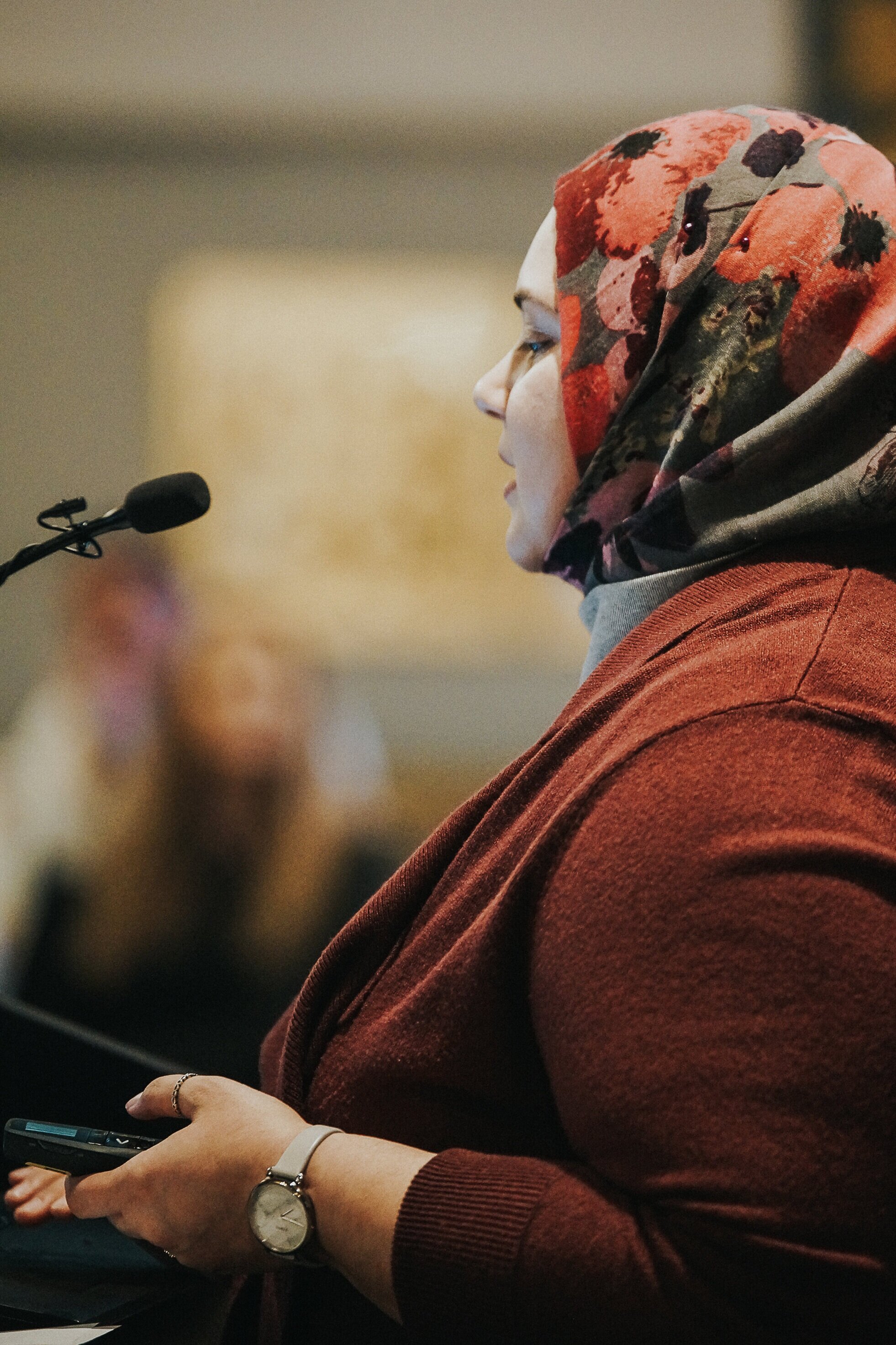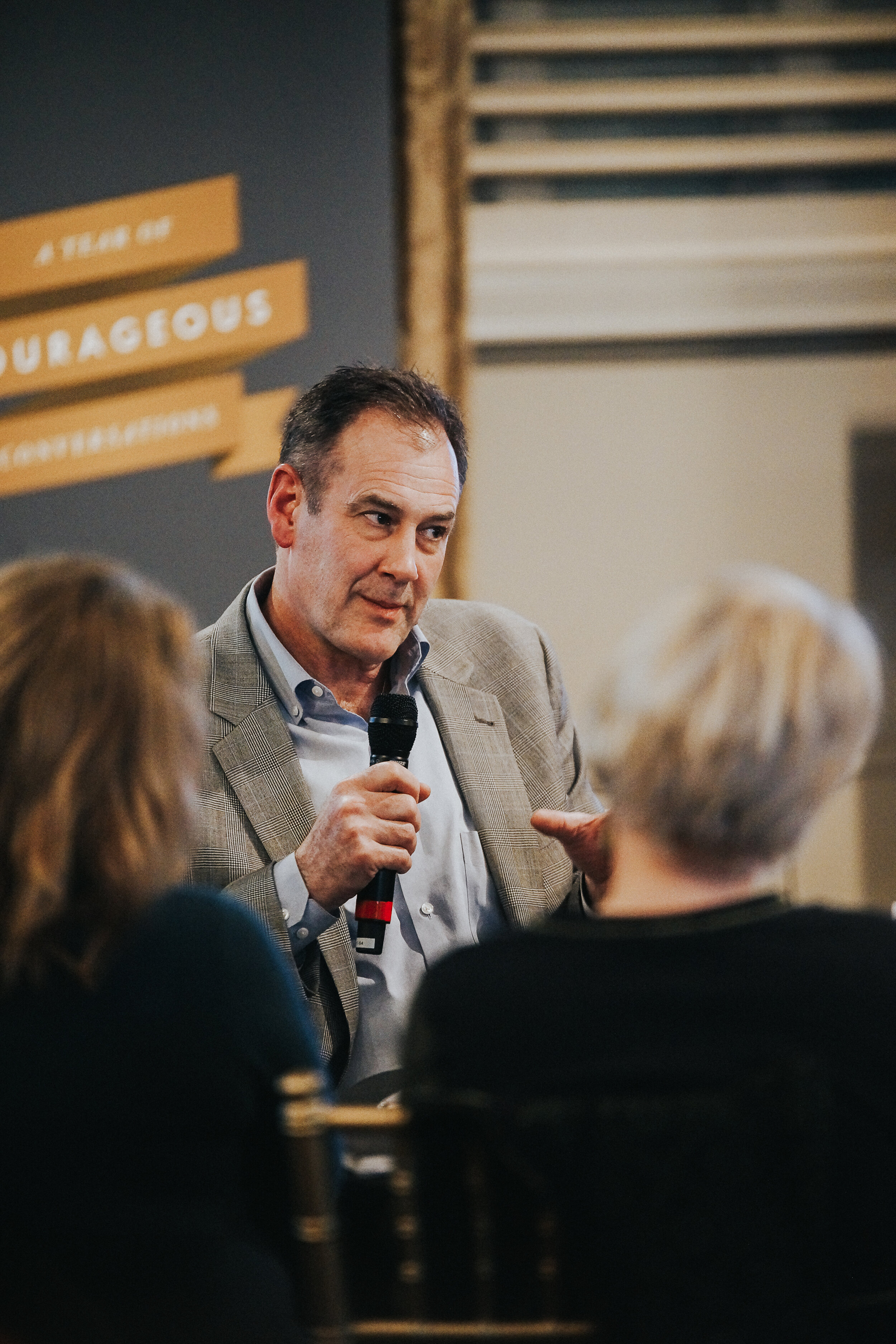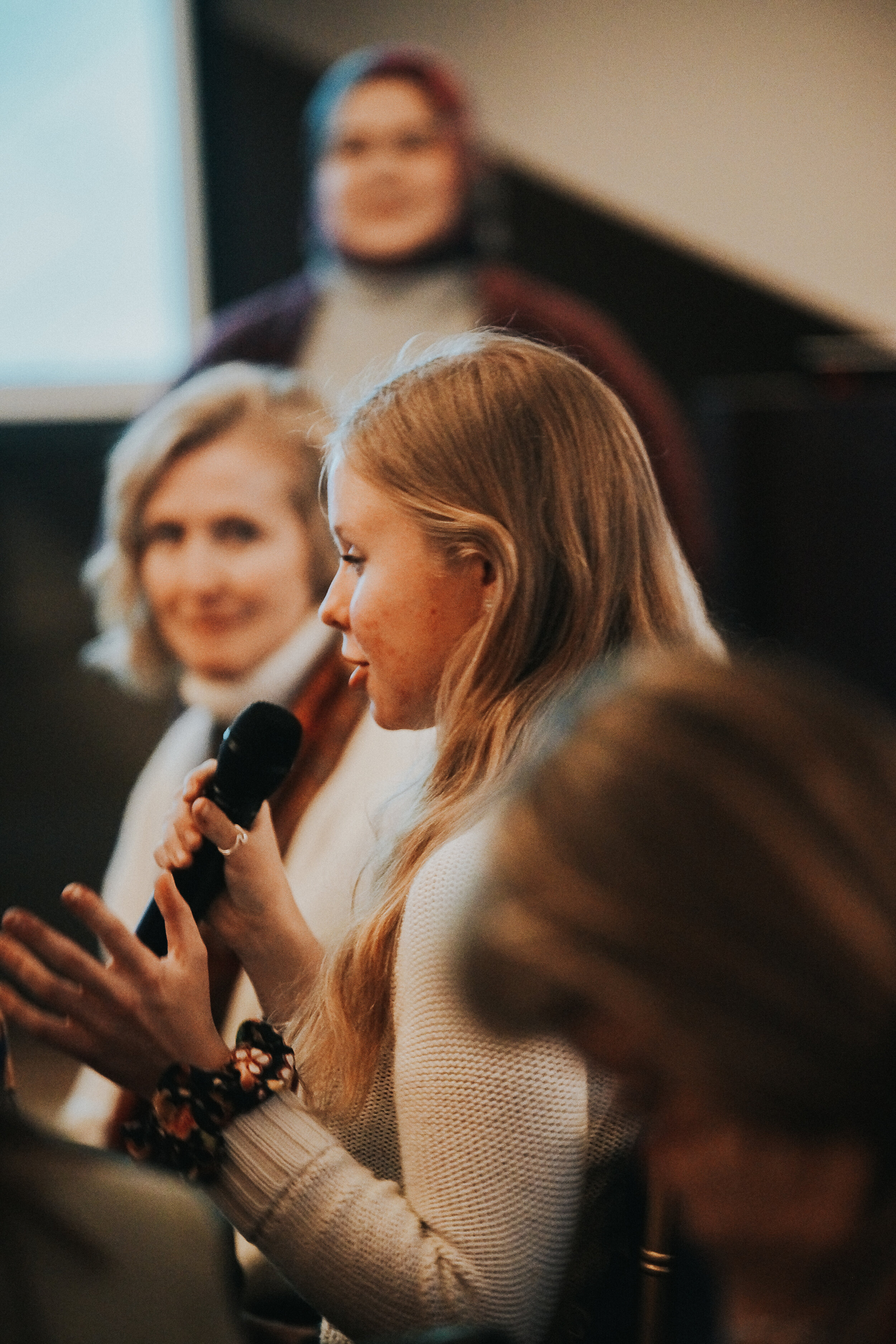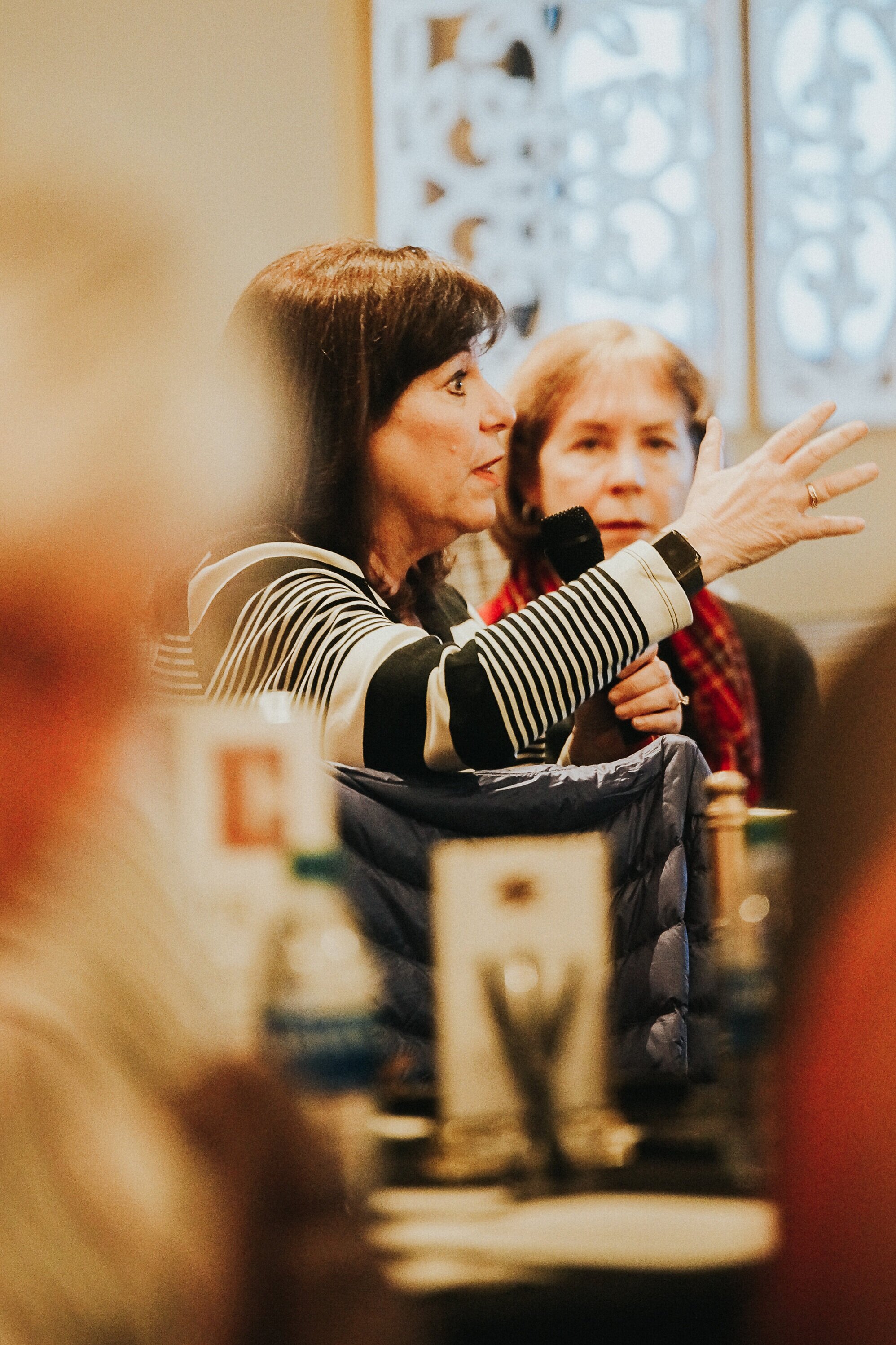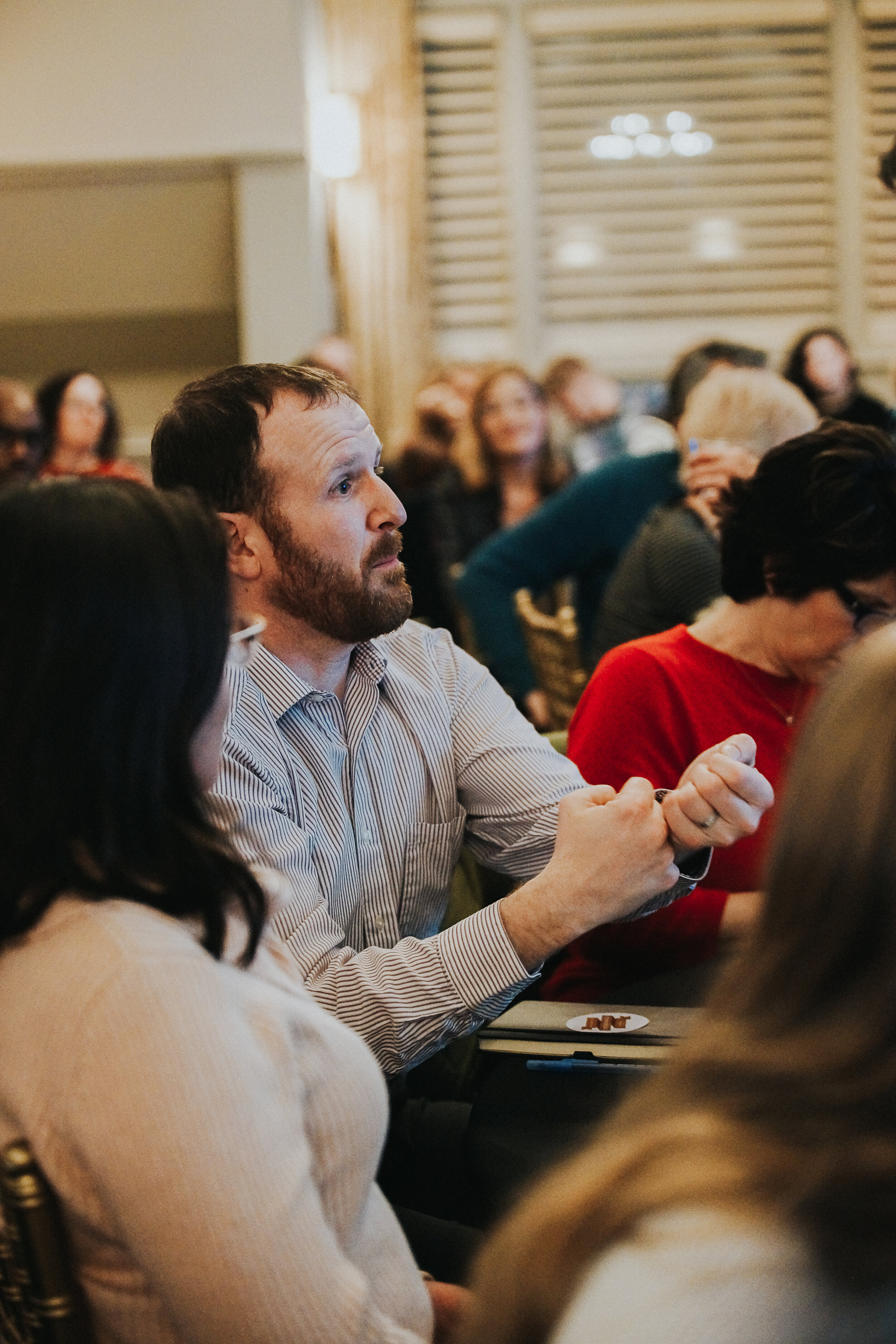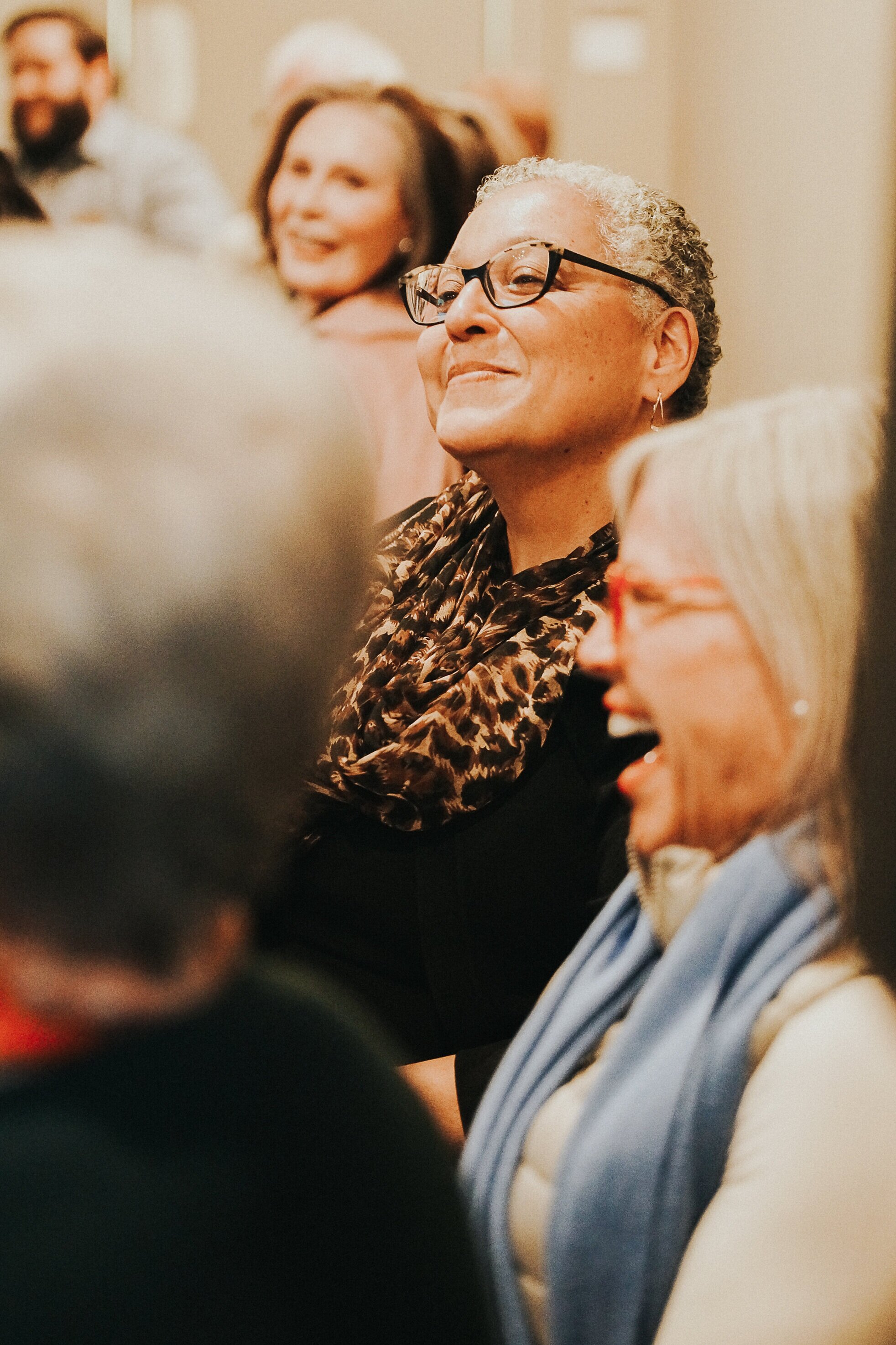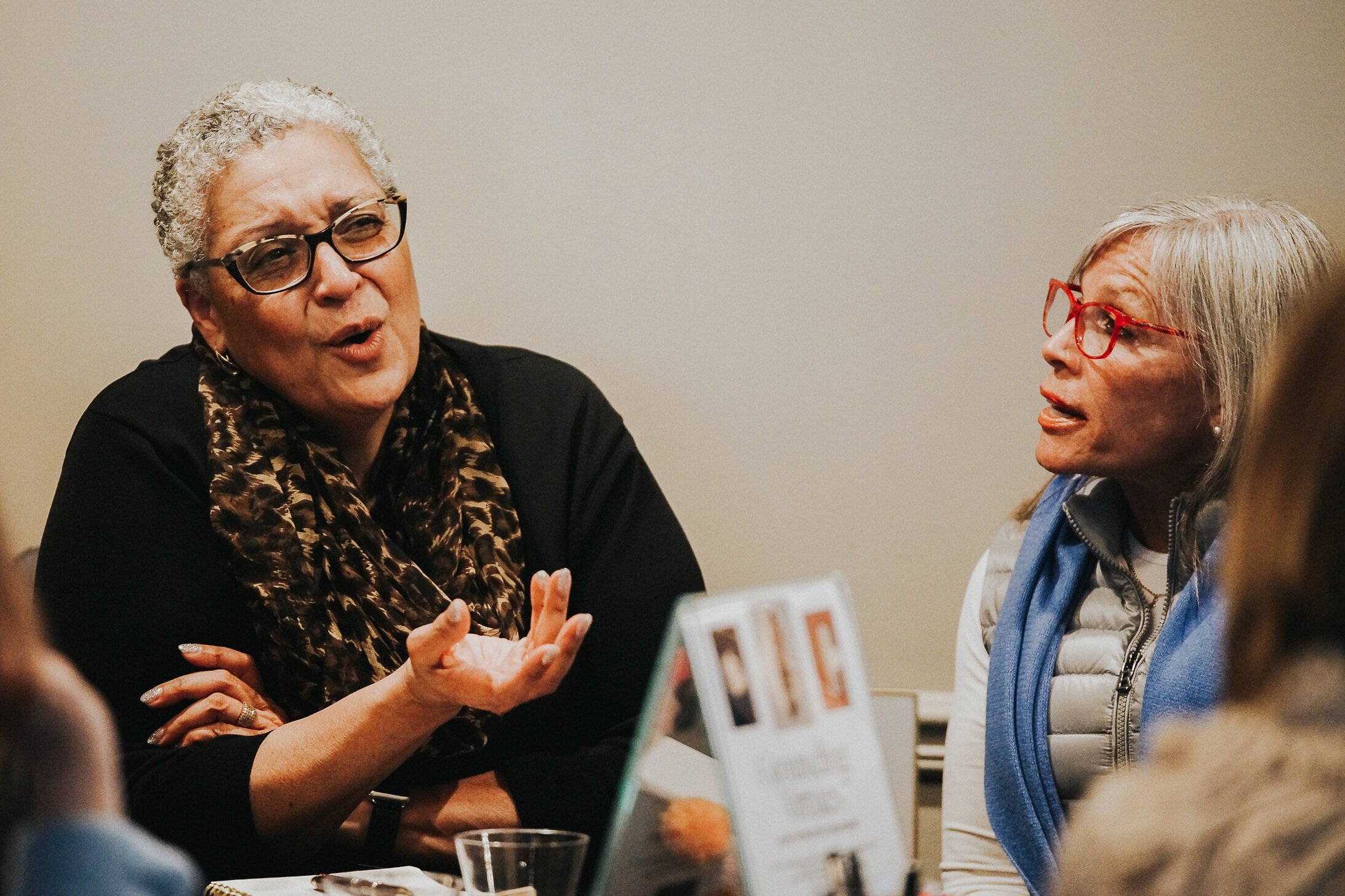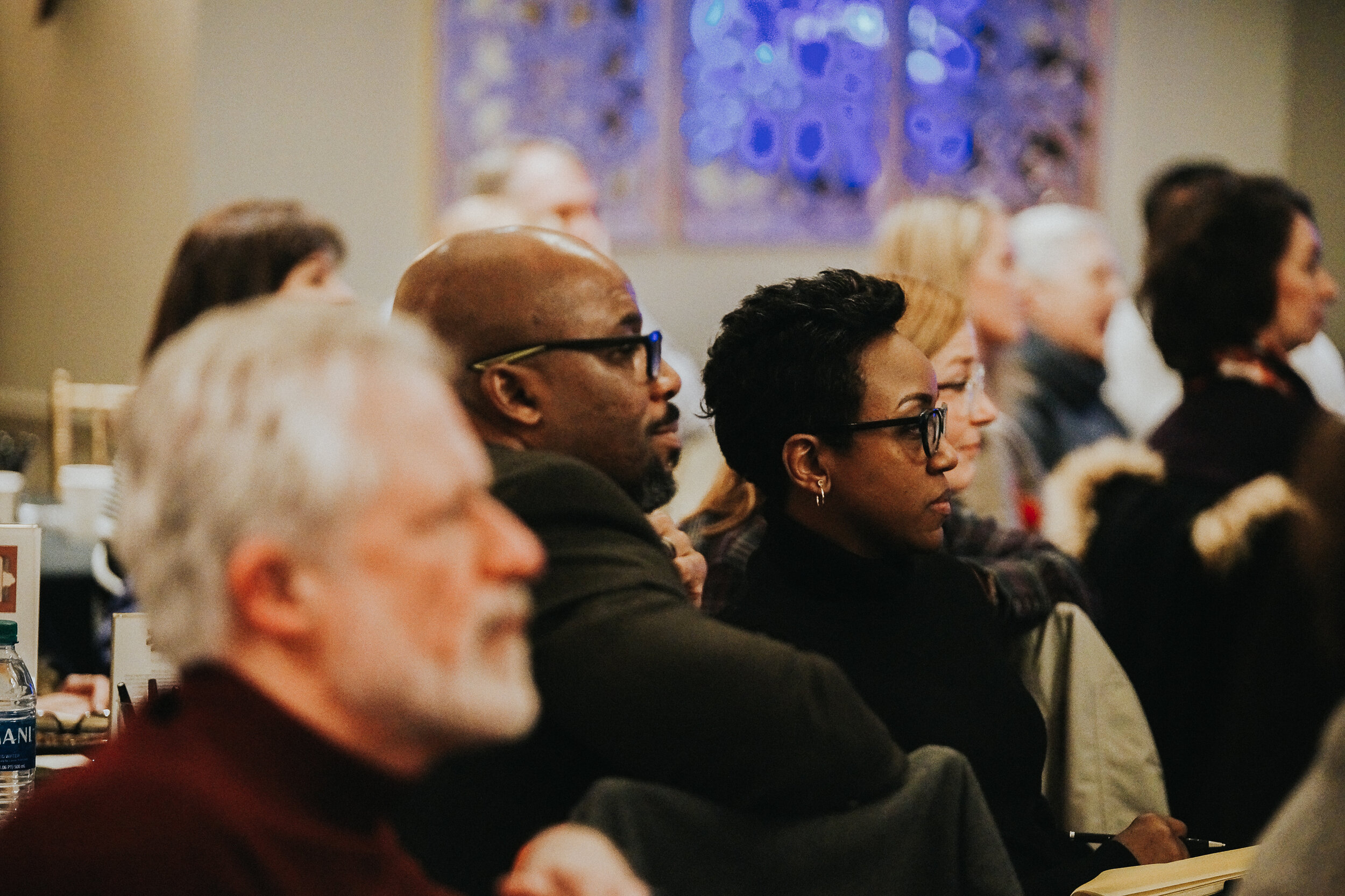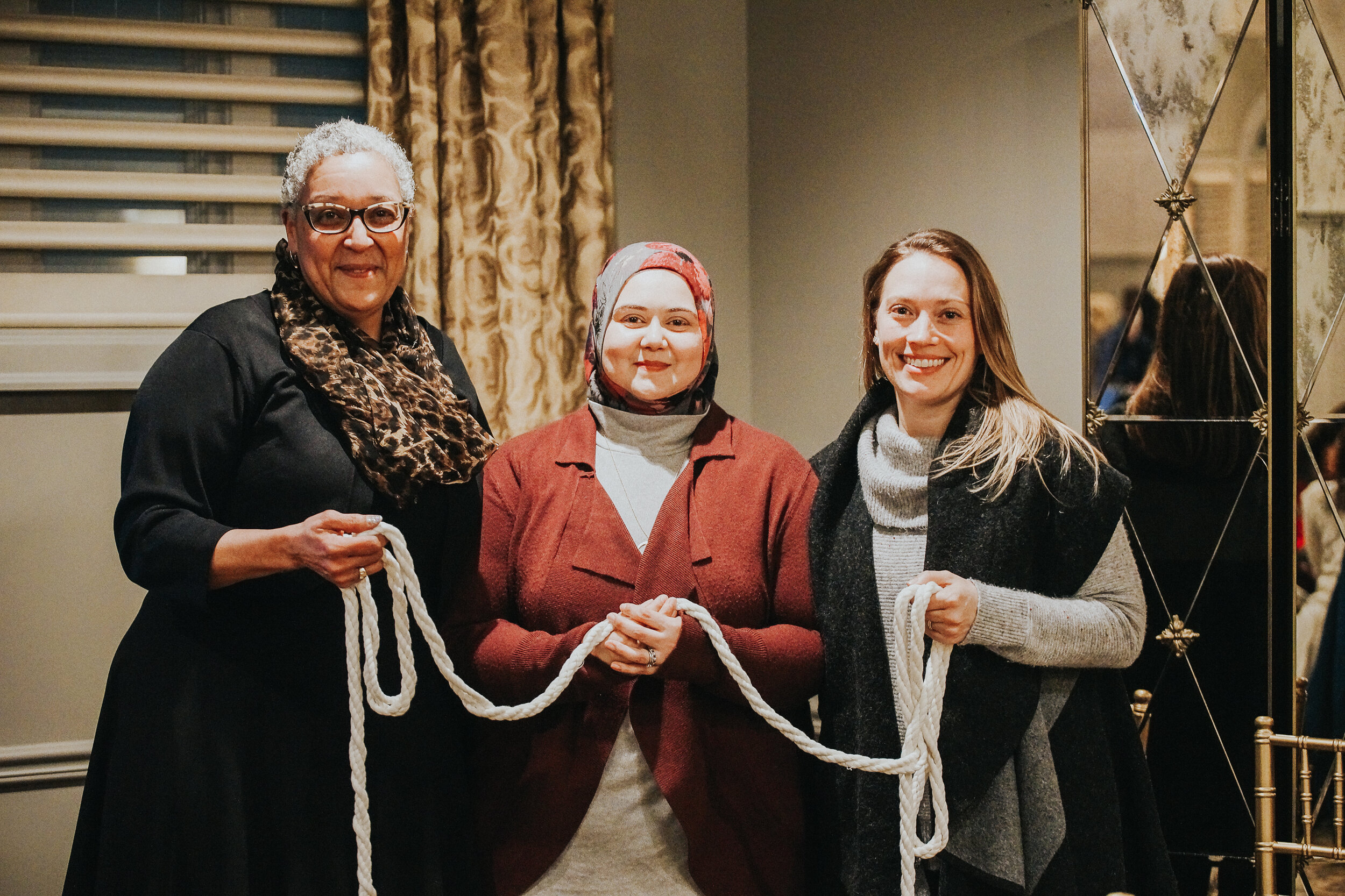BY TAMARA TABEL
“Not doing something is not an option.”
How should we respond to discrimination when we encounter it? On February 12, guest expert Jenan Mohajir of Interfaith Youth Core guided participants of A Year of Courageous Conversations through steps to stand up to prejudice by being an active upstander, not a passive bystander.
What is an upstander? A person who speaks or acts in support of an individual or cause, particularly someone who intervenes on behalf of a person being attacked or bullied.
Jenan Mohajir is an educator, a storyteller, a mother and a believer in building relationships across the lines that separate us. She serves as the Senior Director of Student Leadership at Interfaith Youth Core (IFYC), a national non-profit working towards an America where people of different faiths, worldviews, and traditions can bridge differences and find common values to build a shared life together.
IFYC encourages us to see our differences not as obstacles, but as assets that can help us understand each other. Three elements of their approach to diversity:
respect different religious identities
build mutually inspiring relationships
and engage in common action around issues of shared concern
“Diversity is a fact. Pluralism is an accomplishment.”
Standing Up & Stepping In
Mohajir opened by sharing a personal story. Three years ago on Super Bowl Sunday, not far from where her family lives in Chicago, a synagogue was vandalized with broken windows and painted swastikas.
As a family, they discussed what they would do to support their neighbors. Should they show up? Call? Take people with them to visit?
It was then that her five-year-old son asked: “Will the man who broke that window break our window, too?”
It was a time of a polarizing election, with thousands protesting new immigration and travel bans at airports. Her son was asking more questions about his “otherness” and safety.
“If people at school find out that I’m Muslim, will I be taken away? Am I brown or black?”
As parents, they realized they were in a time and space where they needed to truthfully address his questions and concerns. They asked what he thought they should do.
“We should make some cards and go,” he said. So that’s what they did.
They went to the synagogue so that both their community and their children could witness the space that was violated — and see that adults were trying to fix it.
We each have to find our way to step into this space — to find our place in this conversation, to be a good neighbor when needed, and to ask, “What are the ways we can do that?”
The Bystander Effect
First, we must understand the elements at work that prevent us from taking action. To illustrate, Mohajir showed two videos of staged experiments, where people hesitated to respond.
The first video was of a woman sitting in a room, when smoke suddenly appears in the doorway. In one scenario, the woman notices the smoke, but nobody else around her takes action. It takes her over 20 minutes to get up and seek help. In another scenario, the woman is alone, and almost immediately investigates the source of the smoke, leaving the room to go get help.
What about being in a group caused the woman to wait so long?
Mohajir explained the woman was influenced by the “Bystander Effect” — where the dynamics of being in a group cause hesitation, doubt and inaction.
In another anti-bullying video produced by Burger King, they staged an experiment in a restaurant. As a young man was harassed, many bystanders watched, clearly uncomfortable with what was going on. But only 12% stepping in to assist. However, when the patrons’ hamburgers were smashed (“bullied”) before serving, 95% of customers went up to the counter to complain. People were much more willing to stand up for a burger than a person.
Barriers to Intervention
There are many reasons we may hesitate to intercede and take action:
Safety – Stepping in to help others can be a risk. While some risks are tangible and should be avoided, sometimes those risks may just be perceived barriers. What situations would prevent you from taking action?
Division of Responsibility – In a crowd, there are others who could step in and help in a given situation. Research shows that the smaller the group, or if in a situation alone, people are more likely to step in and help. So you should think to yourself “I must take action” rather than asking yourself “Is there someone else in the crowd who is better qualified to help?”
Internalized Biases – Our views of others are based on our internal biases. Sometimes judgments are made about the victim, and why the victim is blamed when they should not be. Try to avoid asking “What actions did the person do to bring this situation upon themselves?” or tell yourself “That person is not like me, so they probably don’t want my help.”
Unclear Circumstances – You may question that you are misunderstanding or misinterpreting the situation. A common question that may run through your head is whether they are acting or pretending. Although it may be embarrassing, it never hurts to step in and ask if everything is okay.
Communal Influence – We are social creatures and look to our friends and family for social cues. So if they would help in a situation, chances are you would also help, too. Ask yourself: “What would my friends do in this situation?”
In breakout dialogues at tables, Mohajir asked us to examine what other barriers or fears might prevent us from acting — and embrace empathy as the best way to connect.
5 Steps to Being an Upstander
In a “live” incident of discrimination unfolding before you, our first reaction may be to confront the perpetrator. But Mohajir cautioned that this causes more conflict and can actually give them more power.
“Put the center of attention on those being targeted,” says Mohajir. “Decide who you are going to help. The victim needs someone to intercede. You don’t want to feed the conflict and division, but instead look to create more unity.”
She offered these key steps:
Directly connect with the person being targeted. Form a circle around them to let them know that you see them and are in their circle.
Create a diversion or change the subject. In the restaurant video, for instance, one of the women who did step in brought her tray over by the young man, introducing herself to both him and the perpetrators.
Use body language and positioning to shift the power dynamic. In the restaurant video, a woman at down across from the boy and began a conversation with him, offering him safety by her presence.
Locate people around you and enlist them to help. If you are uncomfortable helping or feel the situation demands a more authoritative figure to step in, seek help from others, perhaps a store manager.
Continue to support the victim. Tell them that you can be their witness, or tell them you are going to stay with them until their ride comes.
These same steps apply whether in a real-life situation or witnessing bullying or prejudice over the internet. Mohajir reminded us that we have control over our social media spaces. “You get to tell people what they’re allowed to say on your walls. That’s something to think about as we continue to engage with people online.”
It May Take Time
Don’t be discouraged if you don’t get everything at once — it’s a process.
“You likely will need to be in it for years,” says Mohajir. “It takes a number of personal risks, and it is only through long investment that shift begins to happen. Don’t be discouraged if there’s another obstacle put in your path just after you’ve solved one.”
And never forget — you are not alone. Find your sisters and brothers — we are here for each other. As Rev. Jacque reminds us from Ecclesiastes 4:12: Two people can resist an attack that would defeat one person alone. A rope made of three cords is not easily broken.
Remembering Casey Handal
With heavy hearts, Jessica Green and Zina Jacque of A Year of Courageous Conversations acknowledged the passing of a Barrington resident and friend of the series, Casey Handal, who passed away at age 41 after a brave fight with cancer.
Many knew Casey from a story about prejudice that made the national news —- and the community response that made Barrington proud. After someone snuck into her family’s yard to steal their pride flag and replace it with an American one, neighbors stood up, one by one, to raise their own pride flags in solidarity.
“Frankly, I’ve grown weary of this, of all this hate,” said neighbor Kim Filian. “And I gotta say, it just seemed like there was one thing I could do that I had control of.”
Casey used the media coverage to encourage dialogue: "In a perfect world, I'd love to have a conversation with this person, and find out why they chose to do what they did, and maybe show him or her that we are all human, and should be spreading love and kindness, not hate."
Confronting Prejudice is the sixth of ten monthly sessions for A Year of Courageous Conversations exploring how to foster greater inclusion & belonging in our community. Presented by Urban Consulate at Barrington’s White House in partnership with community advisors, the series is made possible thanks to support from Jessica & Dominic Green, Kim Duchossois, Sue & Rich Padula, Barrington Area Community Foundation and BMO Wealth Management.
